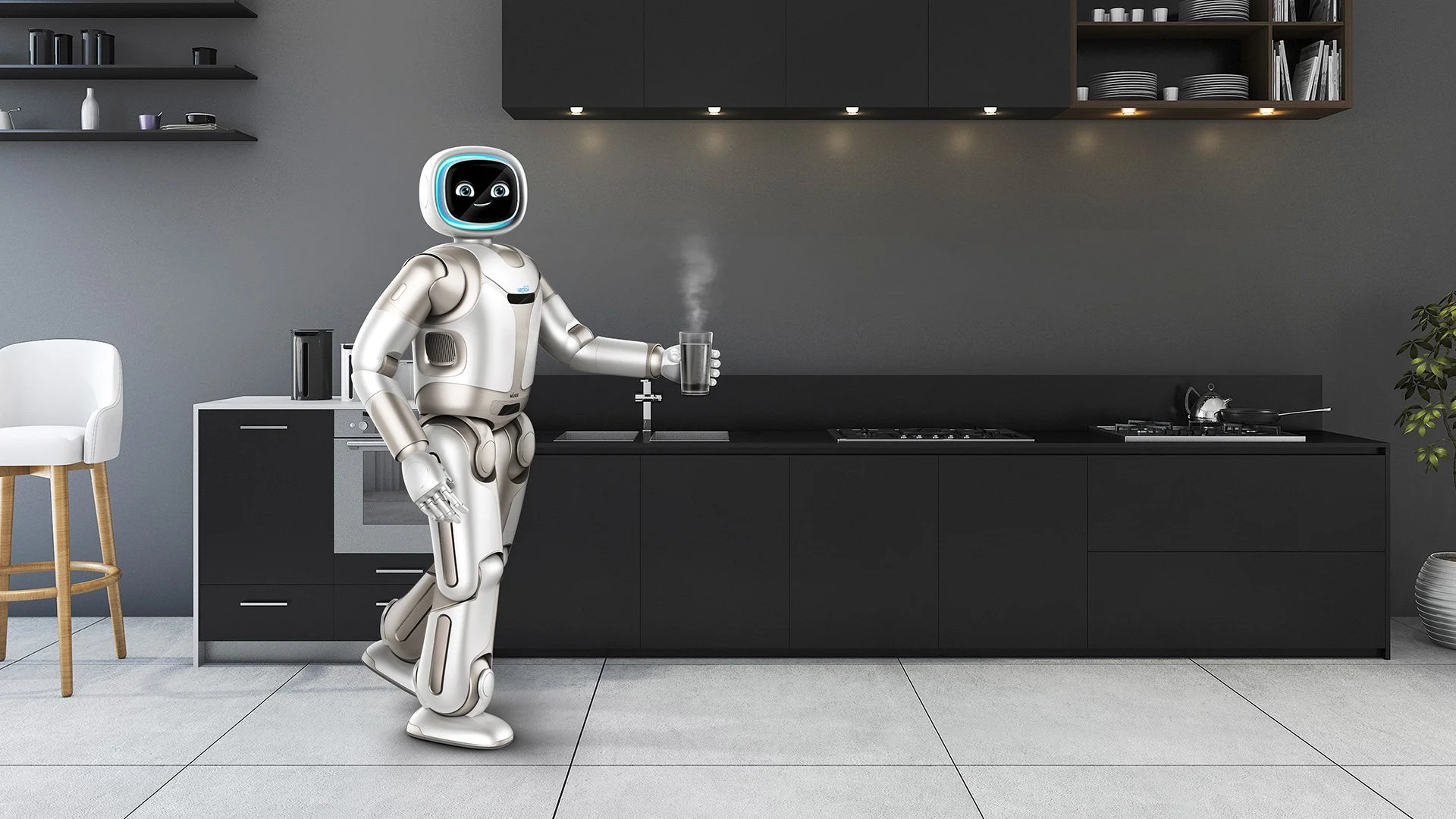
robotics and the home
Humanoid robots provide practical, emotional and safe support in the home, improving quality of life and independence for residents while making the home more intelligent and connected.
-
Assistance with household chores
Humanoid robots can perform a wide range of household tasks, such as cleaning, laundry, tidying up and serving meals. Their humanoid appearance makes it easier for them to access everyday objects and navigate in environments designed for humans.
-
Help for the elderly and people with reduced mobility
These robots can provide personalized assistance to people with specific needs, helping them to move around, take their medication, or perform activities of daily living. They contribute to enhancing the autonomy and safety of residents in their own homes.
-
Home security monitoring
Equipped with motion sensors, cameras and alarms, humanoid robots can monitor residences in real time, detect intrusions, and alert residents or security services in the event of a problem, offering enhanced protection.
-
Emergency response
In the event of a domestic accident (such as a fall or fire), the robots can alert emergency services, provide first aid, or guide residents to the exit. Their presence provides an extra level of safety, especially for people living alone.
-
Companionship and emotional support
Humanoid robots can interact with residents, holding simple conversations and offering a friendly presence, which is beneficial for isolated or lonely people. They can also provide entertainment, such as games, stories or music.
-
Intelligent home management
As connected hubs, robots can control the home's smart appliances (lights, heating, household appliances) and make sure everything is working properly. In this way, they optimize energy consumption, promoting a more eco-responsible home.
-
Support for learning and education
For families with children, humanoid robots can play an educational role, offering learning activities adapted to each child's age and needs. They can also supervise homework and offer educational games.
-
Health and lifestyle monitoring
Robots can monitor residents' health by taking basic measurements (such as temperature and blood pressure), analyzing sleep patterns, and reminding residents to exercise or follow a particular diet, thus promoting a healthy lifestyle.
-
Daily planning and organization
They can help residents manage appointments, errands and chores. They can also provide important reminders, such as taking medication, which is particularly useful for the elderly or busy.
